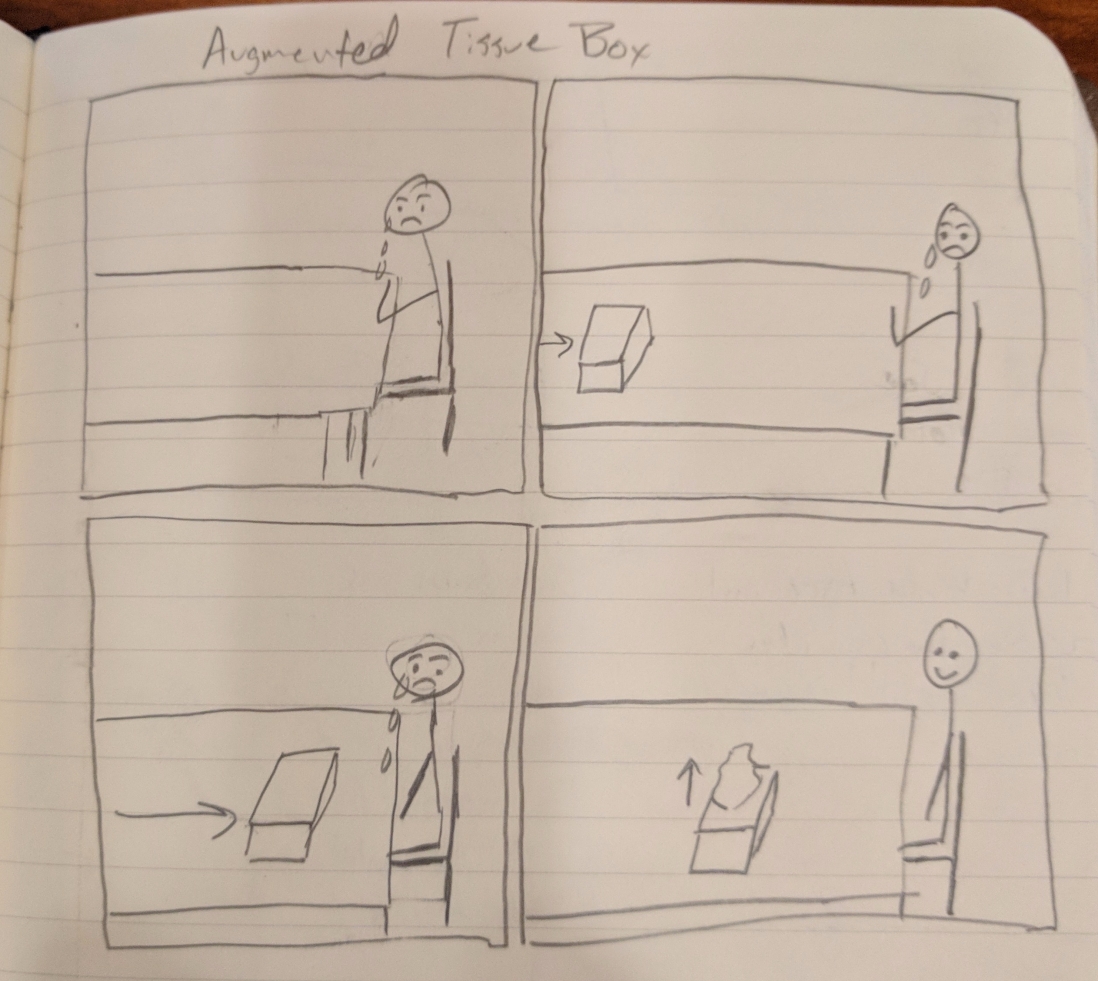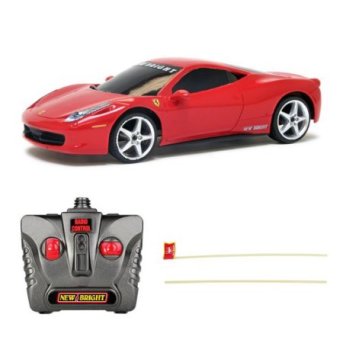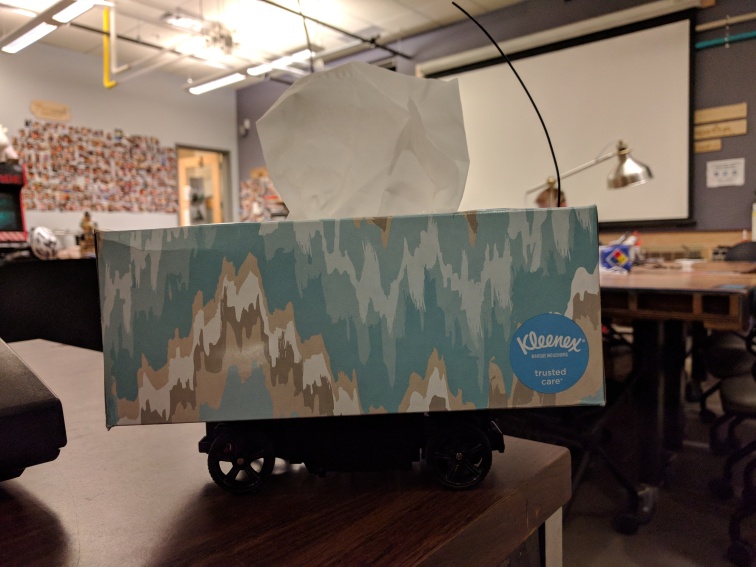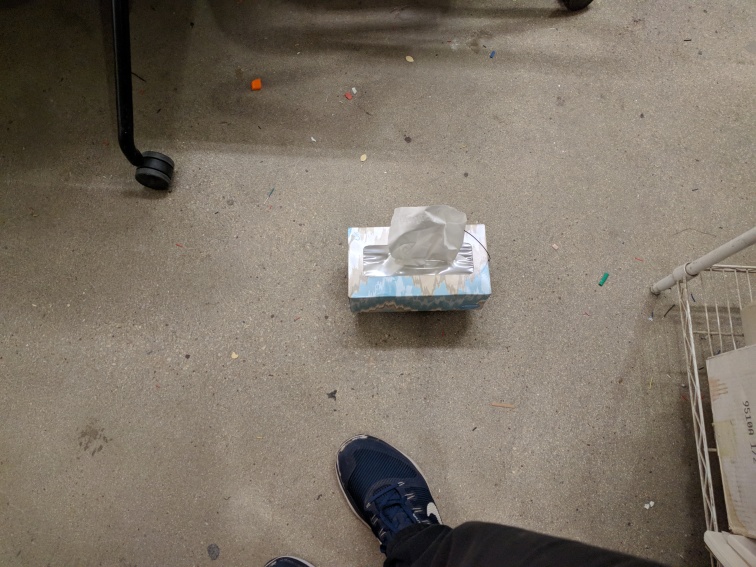CONCEPT
The prompt of this project was to add motion to an everyday object to change its function. The Tissue Bot concept started with the following wireframe:

The idea was to augment the tissue bot to give it movement and the ability to “poof” a tissue in order to offer it to someone that was distressed. My thought process was that generally people are either sad and crying, or sick and uncomfortable when the reach for a tissue. I wanted to see if I could add motion to give it the added purpose of making people smile. The original concept called for the following supplies:
- RC Car
- Tissue Box
- Arduino
- Pneumatic release system
PROTOTYPING
As I shopped for supplies, it became clear that the pneumatic release system would be the most difficult to source. While the RC Car was easy to find and very cheap ($8.99), it would be much harder to find a pneumatic system that could “poof” the tissue in a quick and easy manner. My idea was to use the air bladder from a Super Soaker water gun. This would be a hand-primed air bladder that would release when the trigger was pulled. With the short time allotted for this project however, and my inability to find any Super Soaker locally, it became clear that this aspect of the prototype would prevent me from making progress. I continued prototyping with the hope that the RC Tissue Box would be entertaining enough by itself. Below is the RC car that I started with.

After unscrewing several screws from the underside of the car, I was able to completely remove the top part of the car, leaving me with a driveable chassis.

I began to design a 3D printed chassis just for the tissue box. I was going to remove the steering mechanism and the motor and add them to the new tissue box chassis (essentially a box that could hold the tissue box and interface with the steering and driving aspects of the RC car). Upon further inspection of the turning mechanism, however, I quickly realized that it would be very difficult to remove and add to another chassis. My solution was painfully simple: hot glue the tissue box directly onto the chassis. I had concerns about the tissue box balancing on top, as well as the RC car’s ability to maneuver with the large tissue box on top, but the prototype ended up driving much better than I expected, and most likely much better than if I had tried to transplant components to my own chassis.

The Tissue Bot!

How most people viewed the Tissue Bot
RESULTS
I was eager to test out the Tissue Bot and decided to pick a spot outside to drive it around to see how people would react. People reacted very well to the prototype, which made me confident in my design choice to not pursue the pneumatic aspects of the Tissue Bot. People seemed genuinely amused as the Tissue Bot zipped around their feet. Several people reached down and took a tissue, and several of the more observant people recognized that I was driving the Tissue Bot and came up to talk to me. This preliminary test was not recorded, but I repeated the test several days later in the Student Center in order to film people’s reactions to my augmented tissue box. Through all my driving, I noticed that there were three main reactions people had:
- General amusement (smiling, recording the tissue bot, pointing it out to their friends, etc.)
- Playfulness (jumping over the Tissue Bot, allowing the Tissue Bot to pass between their legs, talking to the Tissue Bot, etc.)
- Taking a tissue
Even though the Tissue Bot was often in danger of being stepped on or kicked, though 4+ hours of driving (and two battery changes) no one ever hurt the tissue bot. Looking back at my initial goal to augment an ordinary tissue box to help spread happiness and joy, I can confidently say that the Tissue Bot was successful.
